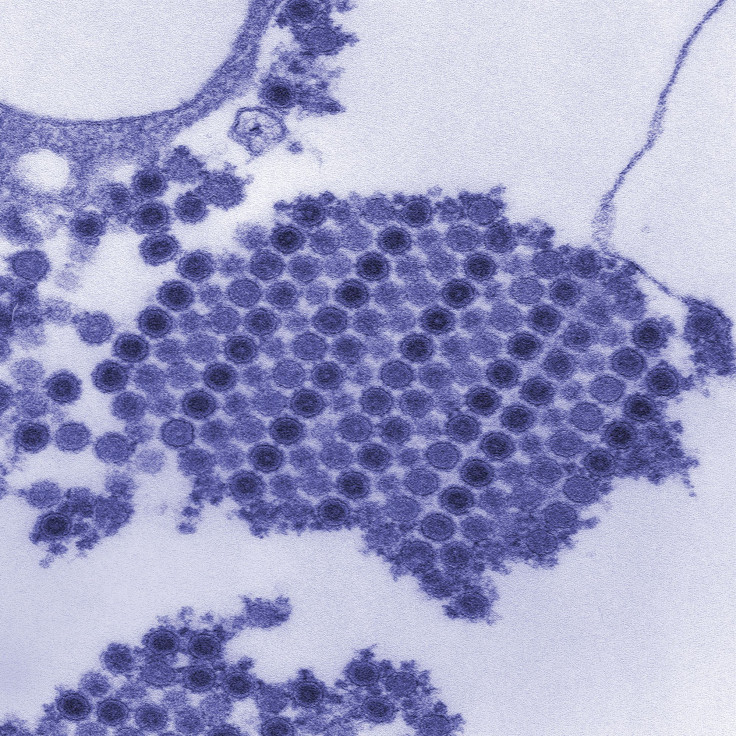Mosquito-Borne Chikungunya Virus Can Rarely Cause Severe Encephalitis And Chronic Mental Disabilities

A silly-sounding mosquito-borne viral disease, chikungunya (chik-en-gun-ye), can have serious long-lasting consequences for a sliver of its sufferers, according to a recent study published in the journal Neurology.
The researchers studied the 3-year aftermath of a chikungunya outbreak on a French-owned island off the coast of Madagascar called Reunion that occurred from 2005 to 2006. They found that at least 57 people came down with central nervous system (CNS) disease as a result of their infection, including 24 who developed encephalitis, or severe brain swelling. The Reunion outbreak ultimately infected 300,000 residents, leading the researchers to estimate the incidence of chikungunya-associated encephalitis at 8.6 per 100,000 persons. However, that rate was particularly higher in infants under the age of one (187 per 100,000), and the elderly over 65 (37 per 100,000).
“These numbers are both much higher than the rates of encephalitis in the United States in these age categories, even when you add together all the causes of encephalitis,” said study author Dr. Patrick Gérardin, a member of the Central University Hospital in Saint Pierre, Reunion, in a statement. These causes include other mosquito-borne diseases such as West Nile virus, which, while sporting a low fatality rate (1 percent), has spread to all corners of the US since it first appeared stateside in the late 1990’s.
A Virus On The Rise
Though known about since the 1950’s, the chikungunya virus (a single-stranded RNA virus belonging to the Alphavirus genus) has received a surge of attention from public health researchers in recent years due to its increasing emergence across the world, including the United States. In areas where it’s able to take hold, chikungunya outbreaks usually spread like out of control forest fires, engulfing anywhere from one-third to three-quarters of the population through the help of two mosquito species: Aedes aegypti and Aedes albopictus. It can also rarely be transmitted through needle contamination and from expectant mother to child.
For the majority of those infected, the virus brings on a week-long bout of high fever and often excruciating joint pain, alongside a myriad of other symptoms like headache, conjunctivitis, and nausea. Though a fortunate 3 to 28 percent escape infection without any symptoms, this latest study reaffirms chikungunya’s ability to cause more serious damage. Of the chikungunya-associated encephalitis cases uncovered by the researchers, 17 percent ended in death, and 30 to 45 percent were left with “persistent disabilities” like behavioral changes, cognitive decline in infants, and dementia in adults. “The consequences of this encephalitis seem to be particularly harmful in newborns,” Gérardin explained.
In the United States, which has approximately seen 517 cases of chikungunya as of this November, the majority of cases have been traced to travelers who picked up the disease from overseas. However, in 2014, a Florida man was confirmed to have obtained his infection from local mosquitos, an ever-looming possibility since both species, particularly A. albopictus are distributed throughout the southeastern US. Nearly 200 cases from Puerto Rico and the Virgin Islands this year were locally acquired as well.
Though chikungunya’s overall threat level in the US remains low for now, this latest study highlights the need to be vigilant against its further spread into the country. “Since there is no vaccine to prevent chikungunya and no medicine to treat it, people who are traveling to these areas should be aware of this infection and take steps to avoid mosquito bites, such as wearing repellent and long-sleeves and pants if possible,” Gérardin said.
Source: Gérardin P, Couderc T, Bintner M, et al. Chikungunya virus–associated encephalitis: A cohort study on La Réunion Island, 2005–2009. Neurology. 2015.
Published by Medicaldaily.com



























